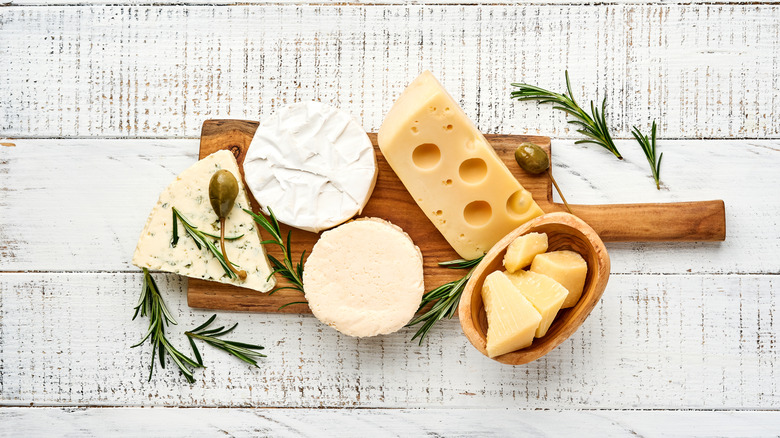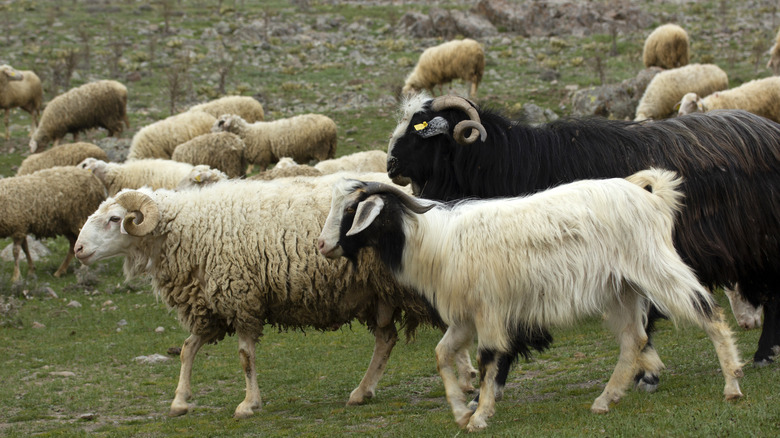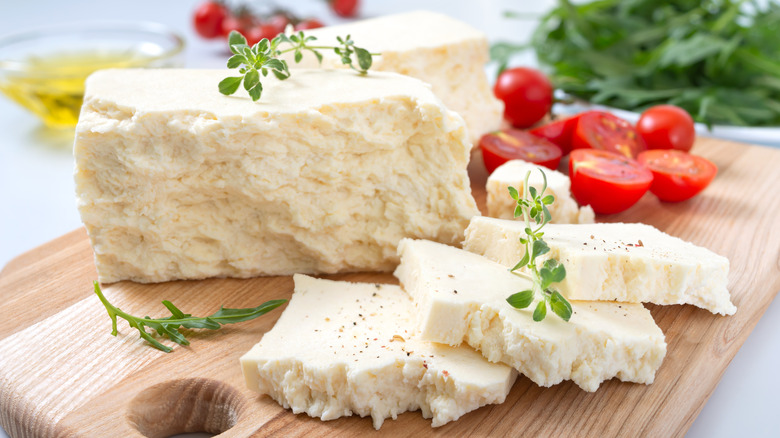The Two Types Of Cheese That Are Blue Zone-Approved
The basis of the Blue Zone Diet is to adopt the diet of people that live in one of five areas in the world dubbed blue zones. Inhabitants of these particular regions live longer than the average person — upward of 100 years — and have fewer chronic diseases. The zones are in Ikaria, Greece; Okinawa, Japan; Nicoya, Costa Rica; Loma Linda, California; and Sardinia, Italy.
While a promising premise that tells you to eat certain foods and live well over 100 years of age, the Blue Zone Diet does not come without some controversy. Questioning of the record-keeping in these areas and claims that there is potentially some data error, or possibly even fraud, are a reminder to take everything with a grain of salt — but not too much! Sodium is limited in this diet.
Most food people in the blue zones eat is plant-based and chock full of complex carbohydrates, but there is a little wiggle room for animal proteins. Some fish, meat, and cheese are on the menu, albeit rarely. Many shun dairy these days for health reasons, so which two types of cheese are consumed in these uber-healthy, long-living zones?
No cow's milk zone
While dairy does have a place in the Blue Zone Diet, it doesn't come from a cow. Goat and sheep's milk are the preferred varieties, and they're consumed in the Ikarian and Sardinian zones.
The average Sardinian consumes about 15 pounds of goat and sheep's milk cheese annually. Pecorino is their go-to variety, and Ikarians opt for feta cheese as their staple animal-based product.
Both sheep and goat's milk cheese are considered easier to digest and well-tolerated by those with dairy sensitivities (and people in general). The two kinds of cheese have differing levels of casein protein than cow's milk products. Sheep and goat's milk cheese have much less A1 casein, known to cause inflammation, and more A2 casein, which is much easier on the digestive system, per My Gene Food.
In addition, according to Joyous Health, goat and sheep's milk contain more calcium than cow's, as well as more essential vitamins and minerals like B12, vitamin C, and zinc. They also have a healthier source of fat in the form of medium-chain triglycerides.
It's all about quality
Some factors are at play in determining why goat and sheep's milk cheese are Blue Zone Diet-approved. It comes down to the how and the how much — with a side of correlation versus causation.
The sheep and goat's cheese consumed in the Ikarian and Sardinian blue zones are grass-fed. Grass-fed means the animal ate its preferred diet of grazing on grass instead of conventional feed consisting of everything from grains and corn to soybeans that are often treated with chemicals and are genetically modified. Well + Good points out that grass-fed dairy is higher in heart-healthy Omega-3s and beta-carotene.
The form of sheep and goat dairy consumed in this diet is also essential. They do not drink the milk but enjoy it after fermentation in the form of yogurt, sour milk, and cheese. Fermented dairy is easier to digest, promotes healthy and diverse gut bacteria, and aids in absorbing vitamins explains The Dairy Alliance.
One thing of note — in order to get this sheep and goat's milk, inhabitants of those zones are putting in the work the animals do. This includes traversing hills and precarious terrain. Coincidence?


